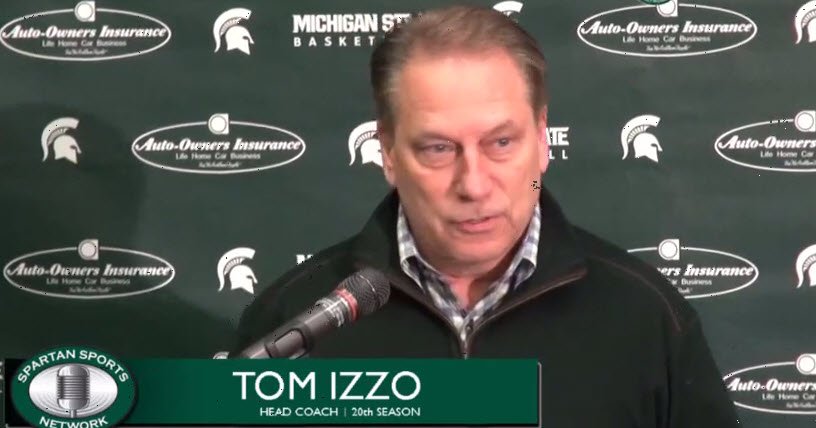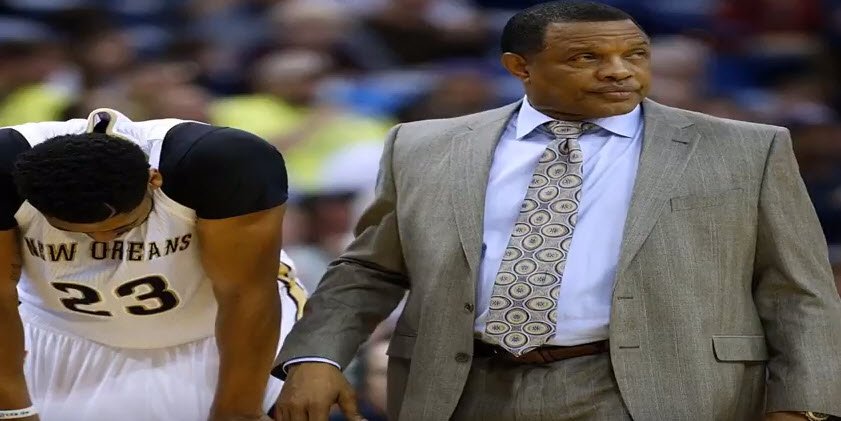Tom Izzo, Michigan State
WBCA Fall Clinic 2015 Notes
Wisconsin Dells, WI
Defensive Drills/Thoughts/Teaching Points
Defensive Goals:
Not a pass denial team
Help defense stays in driving lanes
Goal is to stop dribble penetration
On Ball:
Squared up to the ball; chest to chest/eye to eye. May put head on ball to move offense but do not specifically look to push in a certain direction.
Off Ball:
2 steps to the ball
1 step off the ball line (little more pack style)
Feet are parallel with the ball and their offensive assignment
MUST move on the pass
Starts each season looking at all of the pro championship teams, MLB, NFL, NBA, NHL, and look for common themes.
Typically all championship teams are successful or dominant at defense

Daily Defensive Breakdown:
Daily drills used to build defense
Ball and Gap Defense:
2 lines
Work on moving as soon as the ball leaves the passer’s hand.
Can not leave late!
3 Man Close:
Players close either on ball or in the help position
With the ball at the top of the key
Help defense covers the elbows
Rotate the ball 2-3 times and switch
Izzo has managers to pass but you may have to use players, based on your personel.
Tom Izzo, Michigan State WBCA Fall Clinic 2015 Notes
3 on 3 Close into Live (Didn’t get the name but it was named after a small college that Izzo got the drill from):
3 on 3 Close to start
Players close on ball and into the help position
Ball is sent to top of the key
Offense passes and basket cuts, finishing the cut on the weakside wing
Defense works jumping to pass and stopping the cut
Defense stops face cut in the paint – This is a program NON-Negotiable
– Weakside offensive player, cuts towards weakside block and then fills top of the key
– Ball handler on the wing, swings the ball to the top and waits to fill the key spot
– After receiving the pass from the wing, the top of the key reverses the ball and now repeats
the drill to the other direction.
Beat and Belt: | Tom Izzo, Michigan State WBCA Fall Clinic 2015 Notes
Offense and Defense start 1 on 1 on the block
A coach is at the wing as a passer and another coach is sitting ballside corner to pass
You could also use players for this as well
Offense cuts to top of the key with the defender starting in help position and moving with the offense
The defender’s feet are always parallel to the ball and their offensive player
The coach passes the ball for the defender to knock away
On the pass, the offensive player back cuts to the basket
After knocking the pass away, the defender must recover to stop the entry pass from the corner
Izzo works on the defender planting and pivoting towards the offensive player
He does not want the defense to reverse pivot and place their back to the offensive player
Tom Izzo, Michigan State WBCA Fall Clinic 2015 Notes
Defense vs. Pindowns:
Michigan State trails pindowns to avoid giving up the 3pt shot if the ball is on the key
If the ball is on the wing or side away from the pindown, the defense will go “up the gut”
On trails:
Defensive player trails and makes contact with the cheek
1st step is outside the offensive cutter (back shoulder of the cutter)
2nd step is inside the offensive cutter (towards the basket side of the cutter)
Help defender is 1 step over (towards the ball) and 1 step up towards the ball line
Help defender’s job is to stop the curl cut and not the contest the jumper
As soon as the curl is stopped, the help recovers to his man on the roll or slip
2 on 2 Pindown Drill:
Starts with posts for guards but then just continues with guards going for posts.
Catch and pass back to coach then repeat the pindown screen and coverage
Tom Izzo, Michigan State WBCA Fall Clinic 2015 Notes
Defense vs. Ball Screens
Coverage types:
Jam: vs. Middle Ball Screens
Up & Over: vs. Non-Shooting (popping) Post
Up & Under: vs. Shooting Post
Feather: vs. a good guard with a bad on-ball defender
Jam:
vs. a middle ball screen
screener defender “hugs” or goes chest to shoulder of the screener
on-ball defender goes under the screen
Up & Over:
used vs. a non-shooting post that is not a pick and pop threat
screener (post) defender goes inside foot on the screeners heel
post also keeps contact with a forearm on the waist of the screener
post now hedges chest to sideline
on-ball defender goes over the screen but under his post buddy
as the on-ball defender gets to the screen, the post defender will pick up his inside (towards the basket) foot and allow the defender to get through the screen.
This is the only time the post defender will lose contact of the screener
Tom Izzo, Michigan State WBCA Fall Clinic 2015 Notes
Up & Under:
used vs. a pick and pop screener with the threat to shoot
screener (post) defender goes inside foot on the screeners heel
post also keeps contact with a forearm on the waist of the screener
post now hedges chest to sideline, his job is to delay the ball handler from turning the corner
post defender can not get split by the ball handler
on-ball defender goes under the screen
Feather:
used vs. a guard ball-handler with a weak defensive player
feather would also be used vs. a post that often “slips” the screen
post will “feather” or flat/soft hedge to deny dribble penetration
post defender should be parallel with the screeners back
the ball should see the post defender’s chest after coming over the screen
1st move is to give ground vs. the dribble
2nd move is to grab and pull the guard through/under the screen
post defender then recovers to his man/after guard regains on-ball defense
Stationary Ball Screen Drill:
2 on 2 specific work on each ball screen coverage
Drill can be slowed or sped up to accommodate the players in the drill
Drill is repetitive and focuses on the ball screen defense
Continuous Ball Screen Drill:
Bigs start on the blocks
Guards at the wings
O & D in each spot
Coach makes the call on how each screen will be defended
Once ball is established on a wing, the defense should be in help positions
If looking to push the ball in a direction, on-ball defender will split the ball-handler’s feet.
Example, pushing left, on-ball would place his feet splitting the offensive players left foot
After the screen, ball is kicked to opposite wing and the drill is repeated on that side
Drill is continuous
ICE Coverage (Also seen this called ‘downing” a screen
Force the ball away from a screen
Post defender steps back off of the screen and MUST contain the ball
Post defender can not get “split” by ball handler
On-ball defender steps above the screen and shows his chest to the ball handler
Not ideal vs. the pick and pop
If pick and pop happens, help side defender must “stunt” to the ball until the post defender can recover
Tom Izzo, Michigan State WBCA Fall Clinic 2015 Notes
Communication Drill:
Great scramble drill to teach defensive communication
4 on 3 with offense stationary
Ball must be defended
Corner must be defended (most often pass made in a scramble situation is wing to corner)
Weak side player must guard 2 and yell “2”
“2” = side of 2
“2” also means I’ve got 1st pass
Teammates must scramble to take next pass
Play continues for a set time or stop, etc.
Follow Coach Erick Blasing on Twitter!!!
Click on the pdf link to download the Tom Izzo, Michigan State WBCA Fall Clinic 2015 Notes:




0 Comments